This page is part of the installation ‘Tower of Babel’ >> back to the preface
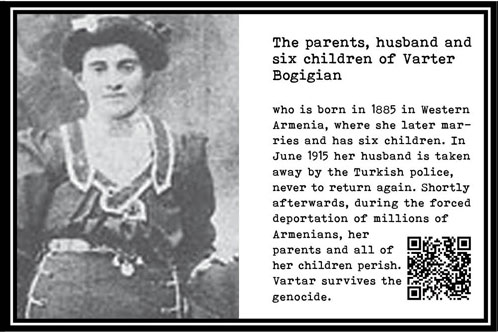
War in Southeastern Europe
In the second half of the nineteenth century, the Ottoman Empire’s power is starting to wane. At the same time, Russia emerges as a new superpower on Europe’s south-eastern border. In 1878, the two powers fought their umpteenth conflict.
As a result of the Russian victory in this twelfth Russo-Turkish War, the Turks lose parts of their European territories, including Bulgaria and Romania. In Turkey, this leads to a rebellion of officers who transform the multi-ethnic Ottoman society into a homogeneous nation-state based on aggressive Turkish nationalism.
At the same time, the Russians tighten their grip on the region, not only in the Balkans and Ukraine but also in areas of the Caucasus, which are partially in Turkish, and partially in Persian hands.
After World War I, the Bolsheviks leave no stone unturned, and, after a brief period of independence, Armenia, Azerbaijan, and Georgia are incorporated into the Soviet Union. It is only after the collapse of the Soviet Union in 1990 that these countries regain their independence.
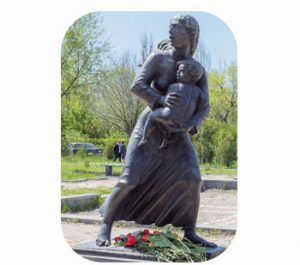
‘Mother Arising Out of the Ashes’
Location: Armenia, Yerevan, Kentron, Tsitsernakaberd Memorial
Design: Rostam Avetisyan
Unveiling: 2002
Photo: Wikimedia Commons
After dramatic Balkan wars, a group of Turkish officers known as Young Turks stage a coup in 1913. They want to transform Turkey into a modern nation, but as their attempts to join England and France are haughtily rejected, they opt for an alliance with Germany in the First World War. When this leads to heavy losses, the Armenians are designated as scapegoats. Mass executions, expropriations, forced assimilation, artificial famine, and destruction of material culture follow. In May 1915, the deportation of the entire Armenian population to the Syrian desert town of Der el-Z begins. The number of victims is estimated at 1 – 1.5 million.
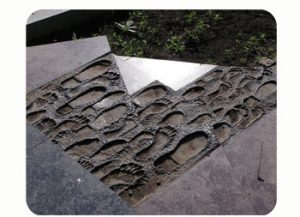
‘Footsteps’
Location: Ukraine, Donetsk, in the district Leninsky
Design: Yuri Ivanovich Baldin
Unveiling: 2006
Photo: Wikimedia Commons
Shortly before the 1941 occupation of Donetsk by German troops, 200,000 residents flee to the east. Three thousand Jewish families have to move to a ghetto in the White Quarry district. There, they perform up to 17 hours of continuous forced labor every day. In April 1942, the Germans close the ghetto and kill the 15,000 inhabitants. Many are thrown alive into a deep mine shaft. Donetsk is almost destroyed: of its 507,000 inhabitants, 175,000 remain after the war. A week before the unveiling of the monument in 2006, it is daubed with a swastika.
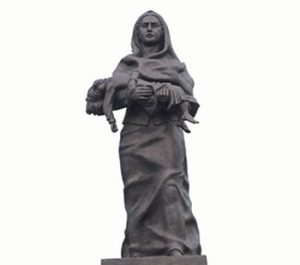
‘Mother’s Cry’
Location: Azerbeidjan, Baku, Khojali Avenue,
Design: Aslan, Teymur & Mahmud Rustamov
Unveiling: 2008
Photo: Baku News
In 1988, armed conflict breaks out between Azerbaijan and the Nagorno-Karabakh region seeking independence and supported by Armenia. The village of Khodzhali has the only airport in the region and is used by Azerbaijani forces to bomb Armenian areas in Nagorno-Karabakh, causing many civilian casualties. On the night of 25-26 February 1992, Armenian soldiers invade the village after heavy shelling. They kill 613 civilians, mostly women, children, and the elderly, and take more than a thousand inhabitants prisoner.
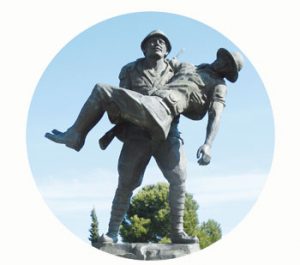
‘Respect for the Tommy’
Location: Turkey, Gallipoli, Çanakkale, Eceabat Kocadere Köyü
Design: Tankut Öktem
Unveiling: 1997
Photo: Wikimedia Commons
In 1915, Allied troops land on the Gallipoli peninsula to capture Constantinople, the capital of the Ottoman Empire, fighting on the German side in the war, from there. The attempt fails, resulting in more than 250,000 casualties, on each side. The campaign is the first major operation for the, because of World War I sent to Europe, Australian and New Zealand Army Corps (ANZAC). The memorial is based on a true story: a Turkish soldier bringing a wounded Australian officer safely behind Australian lines.
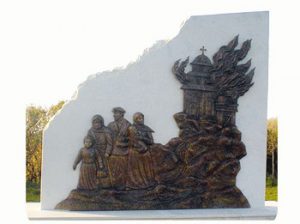
Monument to the Greeks of Asia Minor
Location: Greece, Pella, Neos Milotopos
Design: unknown
Unveiling: 2011
Photo: Greek Genocide Resource Center
In the Ottoman Empire, the Young Turk regime strives for a homogeneous Turkish nation-state. It sees the Christian Pontic Greeks living along the Black Sea coast, like the Armenians, as a potentially hostile minority, especially since the Turks are allies of the Germans. The Greeks have joined the Allies. In raids, large numbers of Greek men are rounded up and taken to concentration camps. Between 1914 and 1922, between 750,000 and 900,000 Greeks died in forced deportations and mass murders.

‘Woman mourns the fallen soldiers’
Location: Bulgaria, Stara Planina mountains, Sjipka pas, Sjipka memorial church
Design: unknown
Unveiling: 1902 (church dedication)
Photo: Wikimedia Commons
The statue stands near the Shipka Church, a memorial church built for Russian, Romanian, Ukrainian, and Bulgarian soldiers. They died in 1877 and 1878 while defending the Shipkapas in the Russian-Turkish War. Thanks to the Russians’ victory, Bulgaria becomes an independent principality within the Ottoman Empire. Under the church is a crypt with 17 stone sarcophagi containing the ashes of the fallen soldiers. The names of the Russian regiments, as well as those of the fallen are engraved in 34 marble slabs.

